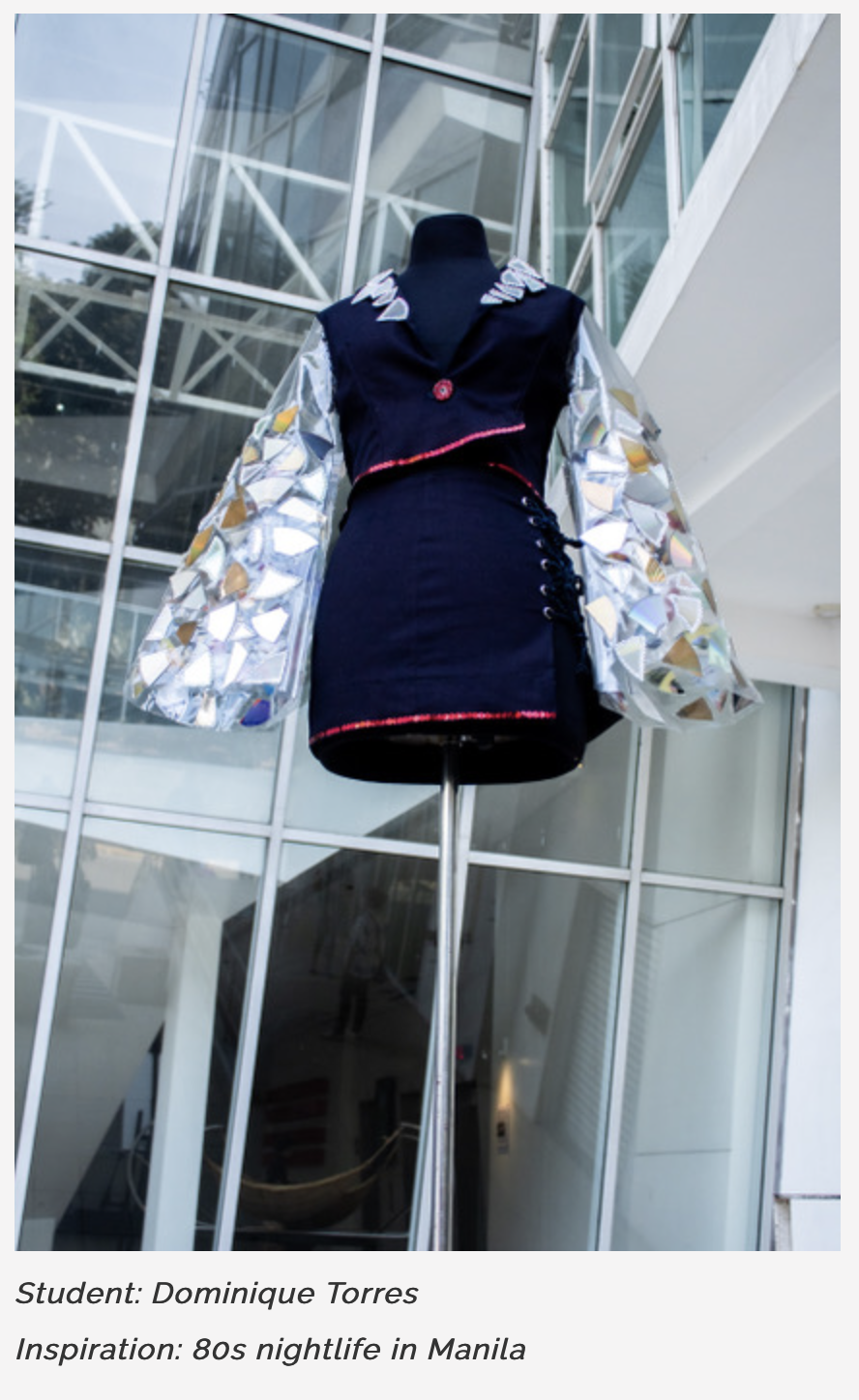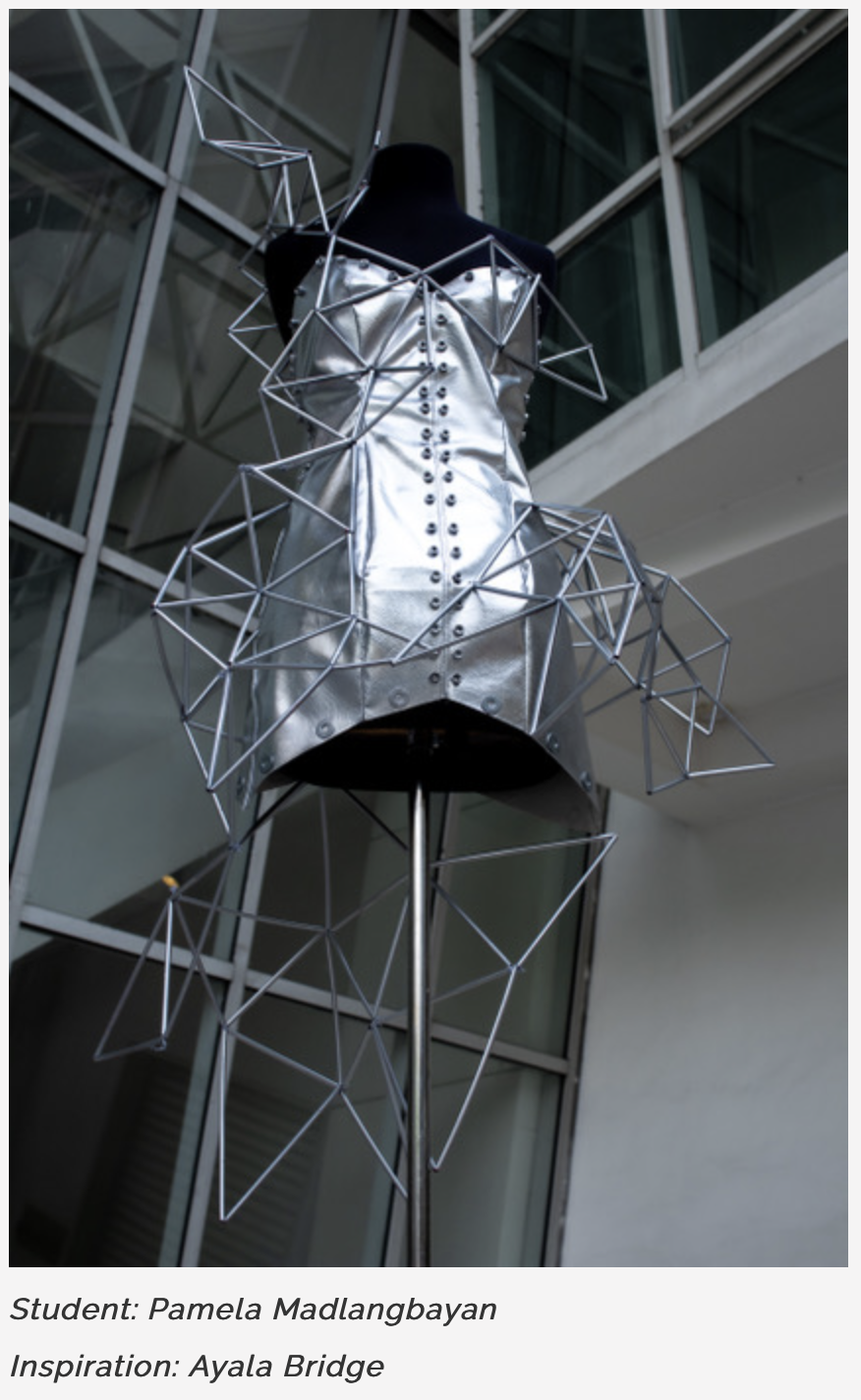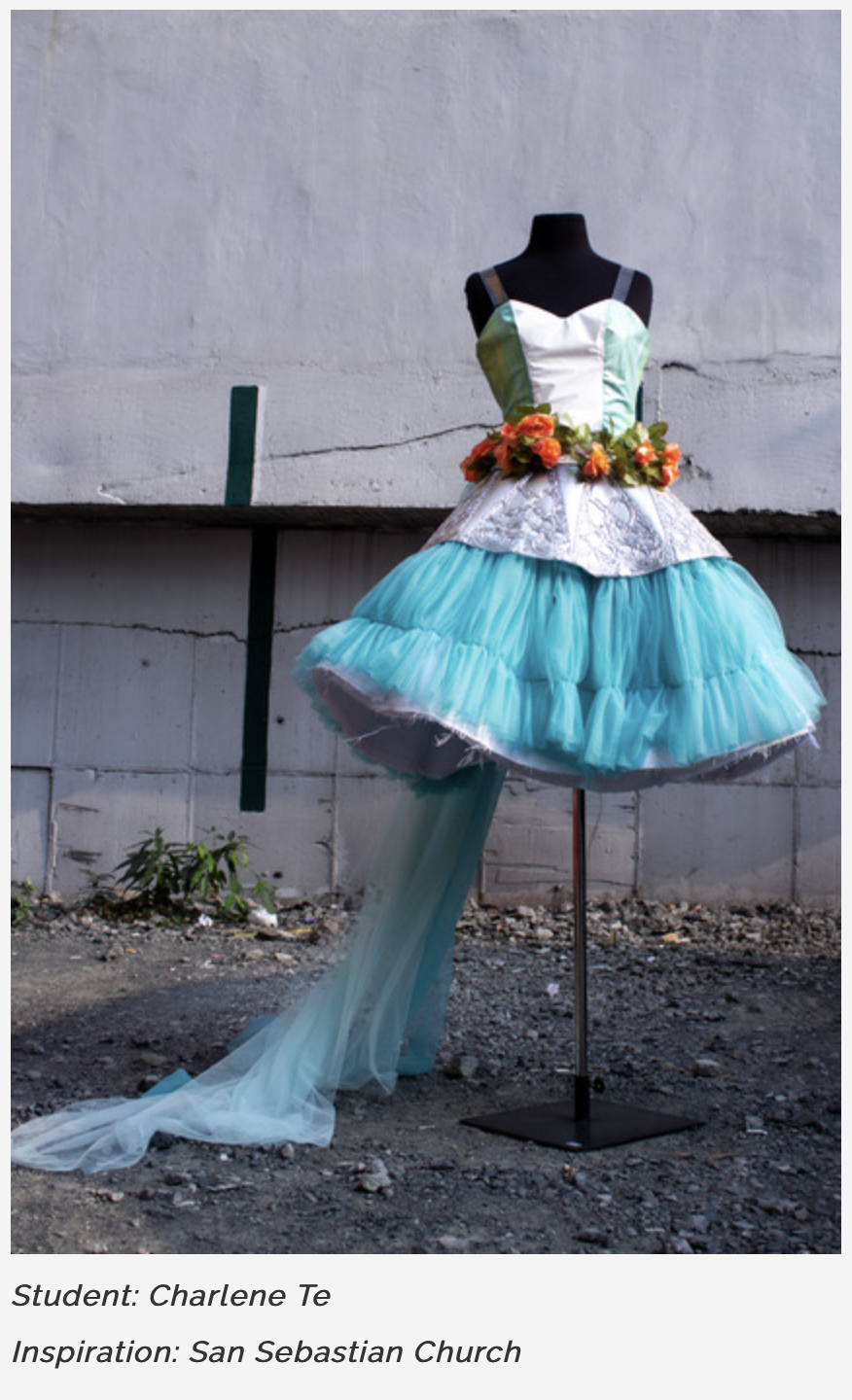HHow do today’s young people see Manila—the ever-evolving “City of our Affections,” as the late National Artist for Literature Nick Joaquin once lovingly described it? Well, it depends on the eye of the beholder. One thing is certain though: Manila, the city, its people and checkered history, doesn’t lack for inspiration to provide today’s Filipino youth.
Over 30 aspiring fashion designers tried to capture the essence of both the Filipino heritage and modern-day Manila in a series of striking and thought provoking installation art-slash-fashion pieces inspired by the iconic landmarks and historical events that helped shape the identity and evolving culture of the Filipino.

Dubbed as “Batang Kalye,” the 35-piece collection was launched as the “Prologue of Sinulid,” the annual culminating show of the graduating students of the Fashion Design and Merchandising (FDM) Program of De La Salle-College of Saint Benilde.
“Batang Kalye” featured exquisite looks that exhibited the various façades and narratives of Manila with the use of unconventional recycled materials, including paper plates, supermarket boxes, plastics, straws, masking tape, Chinese lanterns, scraps of textiles and leather, linen and tulle, abaca and rattan, and even metal, wires, radiographs and LED strips.


The series also featured upcycled pieces that encapsulate noteworthy architecture and interiors found in Manila: St. Scholastica College’s chapel’s stained glass windows; the National Museum of Natural History’s statement ceiling, including its foyer, The Tree of Life; the Manila Metropolitan Theater’s art deco flourishes; the renovated Jones Bridge; and the Philippine International Convention Center’s cantilevered structures.
Other awe-inspiring ideas reflected in the exhibit were Manila Bay’s beauty as well environmental degradation, the golden sunset that lights up Fort Santiago’s arch, the plethora of good luck charms found in Manila Chinatown, the Cultural Center of the Philippines’ artistic legacy, the Manila Central Post Office’s neoclassical aesthetics and even the inside story behind the controversial Manila Film Center.
Ensembles that drew inspiration from Rizal Park’s aerial views, Ermita’s bygone nightlife, the dying sari-sari store tradition, the vibrant University Belt, the renowned pedestrian lanes of Recto Avenue and España Boulevard and the remarkable craftsmanship, creativity and resourcefulness of Filipinos also added color and nuance to the collection.


“Batang Kalye” likewise included dresses that narrated the rich history of the country, from remarkable events such as the Battle of Manila Bay and the EDSA People Power Revolution to figures from the country’s Spanish Colonial past like the ilustrado and guardia civil.
To realize their respective visions, students consulted Benilde’s Center for Social Action (CSA) and the institution’s partner communities and individuals, from the neighboring barangays to the working traffic enforcers and vendors, among others.


FDM Program Chairperson Christine Benet shared that the design process behind the “Batang Kalye” allowed the aspiring style innovators to tap into their identities as budding designers and artists, while highlighting their organic approach “that goes beyond the conventional interpretation of Filipino ingenuity.”
“Our students are also stakeholders of the city given that Benilde is located in Manila and the expanded concept of ‘Batang Kalye’ encompasses their day-to-day experiences – from their childhood to their ambitions,” she said.

